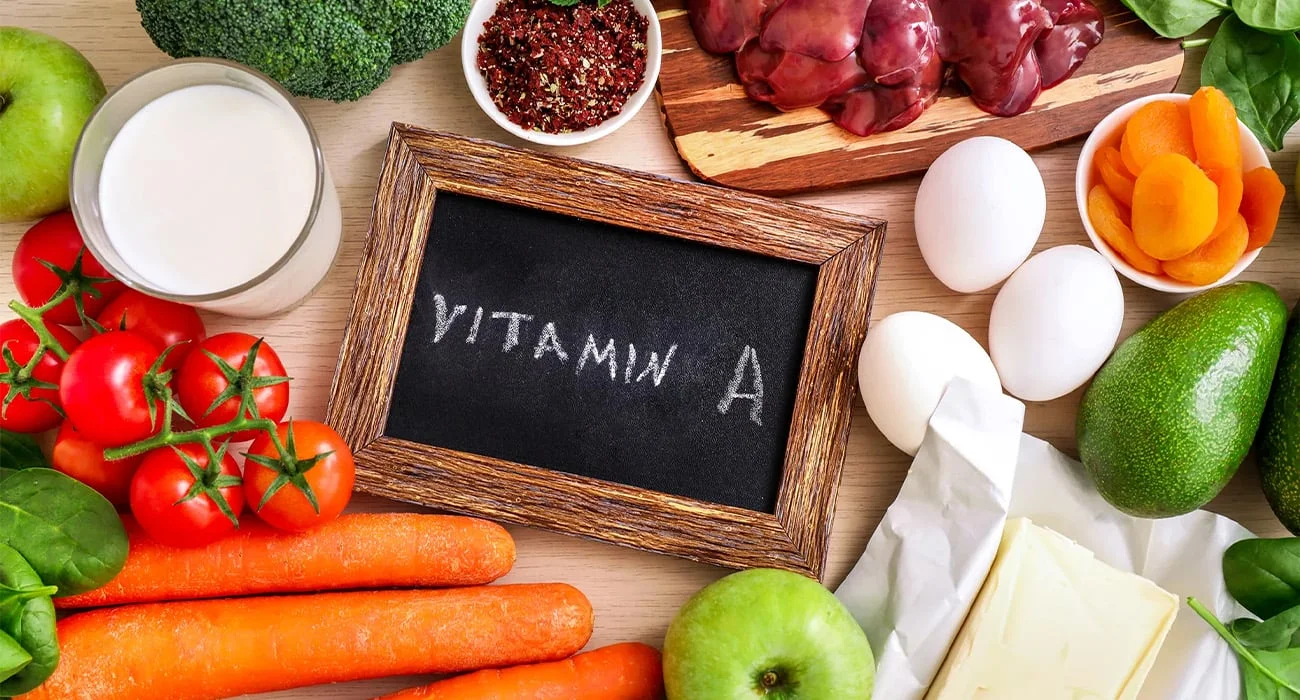What is Vitamin A?

Vitamin A is a type of fat-soluble vitamin that is stored in the liver. There are two types of vitamin A in normal foods. The first of these is premade vitamin A. It is also known as retinol and is an active type of vitamin A.
It is found in animal foods such as meat, fish, poultry, whole milk and dairy products. The second type of vitamin A is known as provitamin A and is found in plant-based foods such as fruits and vegetables.
Another name for the second type is carotenoids, which are pigments that give foods their dark color. This type can convert to the active form of vitamin A. There are more than 500 known carotenoids.
The most common type of provitamin A is called beta-carotene. Vitamins are essential nutrients that are generally either not produced by the body at all or may be produced in insufficient amounts to prevent adverse health consequences or disease.
For this reason, it is necessary to provide the body with vitamins through proper nutrition and vitamin supplements only when medically necessary.
Vitamin A is also available in capsules and products sold as dietary supplements. It is often added to supplements as retinyl acetate or retinyl palmitate (preformed vitamin A), as beta-carotene (provitamin A), or a combination of the two.
What are the Benefits of Vitamin A?
Vitamin A benefits can be listed as follows:
- Vitamin A contributes to normal iron metabolism.
- Vitamin A contributes to the maintenance of normal mucosa.
- Vitamin A contributes to the maintenance of normal skin.
- Vitamin A contributes to the maintenance of normal vision.
- Vitamin A contributes to the normal function of the immune system.
- Vitamin A has a role in cell specialization.
What Foods Contain Vitamin A?
Foods containing vitamin A are considered in two groups. While it is found in the form of retinol in foods of animal origin, it is found in the form of carotenoids (the most active being beta carotene) in foods of plant origin. Vitamin A occurs naturally in many foods; It is also present in some foods such as milk and cereals. Foods containing vitamin A:
Meat products such as beef liver.
Egg yolk.
Some types of oily fish, such as salmon.
Green leafy vegetables and other green, orange and yellow vegetables such as broccoli, carrots and zucchini.
Fruit group including melon, apricot and mango.
Breakfast cereals.
What are the Symptoms of Vitamin A Deficiency?
Although this deficiency seems rare in developed countries, even many people in developing countries cannot meet their sufficient vitamin A needs. People at risk of vitamin A deficiency are generally pregnant women, breastfeeding mothers, infants and children. The 6 symptoms of vitamin A deficiency are as follows:
- Vitamin A plays an important role in skin repair and helps fight inflammation. Therefore, its deficiency may cause inflammation of the skin.
- Vitamin A deficiency can lead to dry eyes, blindness, or serious deterioration of the corneas, also known as bitot spots. One of the first signs of deficiency is often the eye’s inability to produce tears.
- Adequate amounts of vitamin A are very important for eye health. Another possible symptom of vitamin A deficiency is night blindness.
- Women and men who do not get enough vitamin A may experience fertility problems. Low vitamin A in parents can also lead to miscarriages or birth defects.
- Vitamin A deficiency is very effective in the height growth period of children. Taking vitamin A supplements with food may further enhance growth.
- Vitamin A supplements may protect weak children against infections, but may increase the risk of infection in other groups. Adults with high levels of vitamin A may experience fewer throat and chest infections.